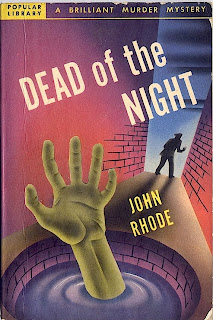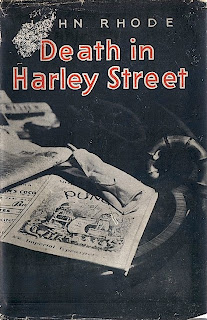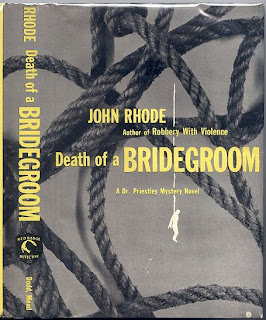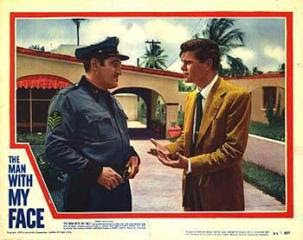Professor I. V. Frost is one of those super-intellectual, multifaceted fictional heroes that reigned in the heyday of the pulp magazine era. He has degrees in science, literature, and law. He was a former university level teacher and had research background in chemistry, physics , biology and physiology. He was also an inventor and automotive tinkerer. When academia grew tiresome he turned to the "final frontier" that all pulp heroes turn to eventually - criminal detection and the pursuit and apprehension of criminals of all types.
Assisting Ivy (as he is affectionately called) is his beautiful and lethal assistant Jean Moray. She's drop dead gorgeous (of course) and pretty mean with an automatic and knows a few tricks in the art of self-defense as well. Her striking beauty and shapely body are a perfect foil to the gaunt, towering, acetic figure of her intimidating employer.
Donald Wandrei's stories featuring this crime duo first appeared in the pages of
Clues from 1934 through 1937. A total of eighteen stories were published and the first few originally published between September 1934 and December 1935 were collected in a handsomely designed volume published by the sadly missed indie publisher Fedogan & Bremer. Titled simply
Frost it includes the very first story (also titled "Frost") as well as seven more that show off the weirder aspects of this writer and his brainy, somewhat arrogant detective.
An informative introduction by D. H. Olson traces the beginnings of Wandrei's career in the pulps, his early foray into the detective story and the immense popularity of the Ivy Frost stories. A passing mention is made of Wandrei's claims that some of the stories were plagiarized, but in my reading I found numerous similarities to the stories of Sherlock Holmes. In the case of "Impossible" the entire beginning is practically lifted from "The Red Headed League." Plagiarism? Or mere coincidence? This kind of thing is hard to prove and I tend to dismiss any pulp writer who claims his worked was pilfered when I can find egregious examples of possible pilfering from classic works in their own stories.
As for the stories themselves we have tales with bizarre murder methods like liquid nitrogen - apparently a favorite in the pulps as Anthony Rud also made use of it in
The Rose Bath Riddle one year earlier than Wandrei did. "The Artist of Death" is a complex story that begins with a man confessing to the slaughter of apes throughout New York area zoos and pet shops, then asking Frost to murder him so that it doesn't look like suicide. Soon Frost discovers that the man's brother, a painter specializing in macabre and surreal artwork, has been horribly murdered. The story "Green Man - Creeping" tells of Mae Ellen Hollister whose entire family died over a period of two years. All of them seemed to have been frightened to death. Her brother, the last to die, was mysteriously murdered in a crypt no sign of a weapon or any other person having entered the crypt. This is the tale which Wandrei and Olson claim was plagiarized by John Franklin Bardin in his novel
The Deadly Percheron which admittedly does share some similarities in plot. But it is "Impossible" which best exemplifies Frost. Here is a prototypical pulp story with convoluted plot, action scenes galore and the usual arcane knowledge imparted.
"Impossible" begins with a Holmesian office scene is which Nick Valmo tells Frost of how he answered an advertisement that runs:
Wanted: man, single, 5', 9 1/2" 140-150 pounds, age 26-30, brown eyes, black hair, Latin type, perfect teeth, ho physical disabilities, for interesting experimental and research work. Must be prepared to spend nights out of town. Good salary to right party.
He applied and out of the many identical looking men Valmo got the job. He was then chauffeured in a windowless truck to a brick house out in the country where he was asked over a period of days to perform some strange tasks. He copied out Chinese characters, he spent two hours doing nothing but talking, he even was asked to walk around the room naked for an entire afternoon. Valmo wants Frost to find out who hired him and why. Frost immediately asks Valmo to take off his shoes, leaves the room and when he returns he says he will take the case. When Valmo leaves Frost asks Jean what she thinks. She is astonished by the story but wants to believe Valmo even if he proves to be the world's most gullible fool. Frost replies that the story is true but the man is
not the real Nick Valmo. He then enumerates nine points based solely on observation that prove the man who visited cannot be the real Valmo. These include scars on his face and fingers that indicate plastic surgery and uneven wear on his shoes proving that his smaller feet could not have caused the damage. Shades of Sherlock Holmes, eh?
 |
| From the collection of Morgan Holmes |
From there the story becomes more and more involved. Frost breaks into a cemetery vault and takes fingerprints off a corpse. He learns of some confidence men who have gone missing or turned up dead. He enlists Jean's aid in trailing Nick Valmo, endangering her life in the process. He dons deep sea diving equipment to recover a dead body from a lake. Finally, almost single-handedly, Frost manages to solve the various mysteries that come to light using his far-fetched methods. They are presented as if they were logical deductions but they are anything but logical and far from fair play detection.
The I.V. Frost stories are perfect examples of the fantastical trends of the mystery story as published in the early pulp magazines. I found something to marvel at in all of the stories in this volume. Wandrei's imagination and plotting can be breathtaking, but his writing can also show the telltale signs of the penny-a-word fictioneer at his most verbose and multisyllabic. Here are two examples that occur in the same paragraph:
He did not look like a person to be thought of in terms of blithesomeness and conviviality, but gay he seemed and plastered he was.
The entirety of this exquisite person finally arrived, after a series of further minor encounters with recalcitrant nature, in the general vicinity of his farm house
Blithesomeness? Ugh. Cumbersome neologisms and convoluted sentences like those tend to grate on the nerves after a while.
I've read elsewhere on the internet that there may soon be a new volume that compiles all eighteen Frost stories. Published by
Haffner Press it should be released in March 2012. I'm eager to read those other ten stories - fantastic plots, verbose sentences and all. It's darn good reading even with their minor faults.


















































